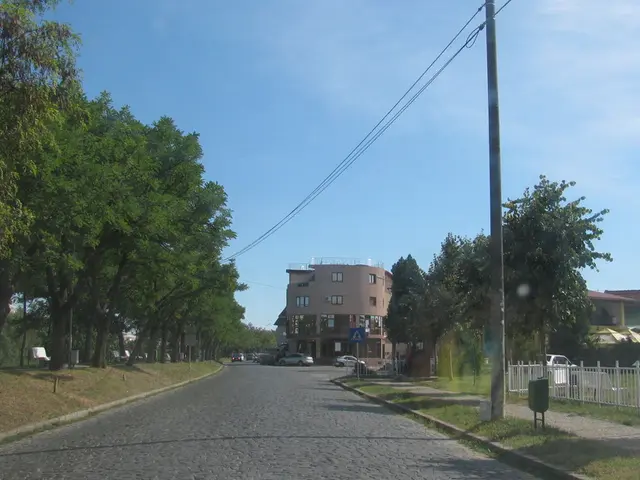Interregional transmission agreements gaining acceptance must rely on win-win scenarios, say experts.
In the United States, the pursuit of interregional multi-value transmission projects faces significant challenges, particularly in the area of cost allocation[1]. However, recent discussions highlight that a strategic focus on benefits allocation and voluntary, collaborative regional mechanisms could be the key to unlocking these projects[1][2].
MISO (Midcontinent Independent System Operator), currently resistant to interregional transmission and showing protectionism towards incumbent generation, is facing a complaint filed last month by five state utility commissions over a portfolio's classification[4]. The complaint alleges that MISO used flawed modeling to calculate the potential benefits, which are significantly less than the portfolio's costs.
Abe Silverman, an assistant research scholar with Johns Hopkins University, is facilitating the Northeast States Collaborative on Interregional Transmission. He suggests that the focus should be on benefits allocation rather than cost allocation[3]. Silverman's goal with the RFI initiative is to identify candidate projects to highlight the benefits to consumers[2].
The RFI, issued by the Collaborative in June, seeks candidate projects that would increase interregional transfer capability[2]. Responses to the RFI are due on October 23, and the initiative is specifically focused on projects between PJM and New York, or between New York and ISO New England.
Regional collaboration between Northeastern states and Canada could be beneficial due to mutual carbon-reduction goals and potential domestic limitations on U.S. offshore wind development. Nova Scotia has designated four offshore areas for future offshore wind development and is exploring the idea of exporting some of that power to New England[3].
Best practices include moving beyond strict one-to-one benefit-cost ratios and allowing states some voluntary flexibility in covering project costs aligned with their perceived benefits[3]. This flexible, voluntary approach recognizes the complexity and different priorities within regions.
The Interregional Transfer Capability Study (ITCS), mandated by Congress and involving transmission planning entities like NYISO, has been actively evaluating interregional transfer reliability and planning, helping to inform both cost and benefits allocation frameworks as of early 2025[5].
The CapX2020 project, a complex collaboration that involved regulatory processes, logistics, and significant financial complexity, serves as a testament to the potential benefits of interregional transmission projects[6]. Early supporter Soholt emphasizes the importance of a shared vision and willing participants for such projects.
Altogether, while cost allocation remains a major hurdle, the strategic focus on benefits allocation and voluntary, collaborative regional mechanisms is shaping current methods to unlock interregional multi-value transmission projects. This approach aims to create "win-win" scenarios and shared incentives, fostering stronger multistate and cross-border cooperation for such projects[1][3][5].
[1] Acadia Center. (2021). Interregional Transmission in the Northeast: Challenges and Opportunities. Retrieved from https://acadiacenter.org/wp-content/uploads/2021/06/Interregional-Transmission-in-the-Northeast-Challenges-and-Opportunities.pdf
[2] Northeast States for Coordinated Air Use Management (NESCAUM). (2021). Request for Information: Interregional Transmission Projects. Retrieved from https://www.nescaum.org/resources/request-for-information-interregional-transmission-projects/
[3] Poplavska, A. (2021, July 13). Interregional Transmission: Challenges and Opportunities. CBC News. Retrieved from https://www.cbc.ca/news/canada/nova-scotia/nova-scotia-wind-power-export-1.6086665
[4] Public Utilities Fortnightly. (2021, August 2). MISO Faces Complaint Over Portfolio's Classification. Retrieved from https://www.publicutilitiesfortnightly.com/2021/08/02/miso-faces-complaint-over-portfolios-classification/
[5] Federal Energy Regulatory Commission. (2021). Interregional Transmission Planning Study. Retrieved from https://www.ferc.gov/legal/staff-reports/2021/march/ferc-staff-report-on-interregional-transmission-planning-study.pdf
[6] Soholt, T. (2021, July 21). The CapX2020 Project: A Success Story of Collaboration. Retrieved from https://www.capx2020.org/the-capx2020-project-a-success-story-of-collaboration/
Read also:
- Citizen Thekla Walker, Minister, advises: "Let's focus on our own homes first"
- British pension trust seeks minister's support for review of fiduciary obligations
- Private power generators in Iraq: A lifeline or an environmental strain?
- Embracing Renewable Energy: 5 Key Advantages Over Traditional Power Sources








